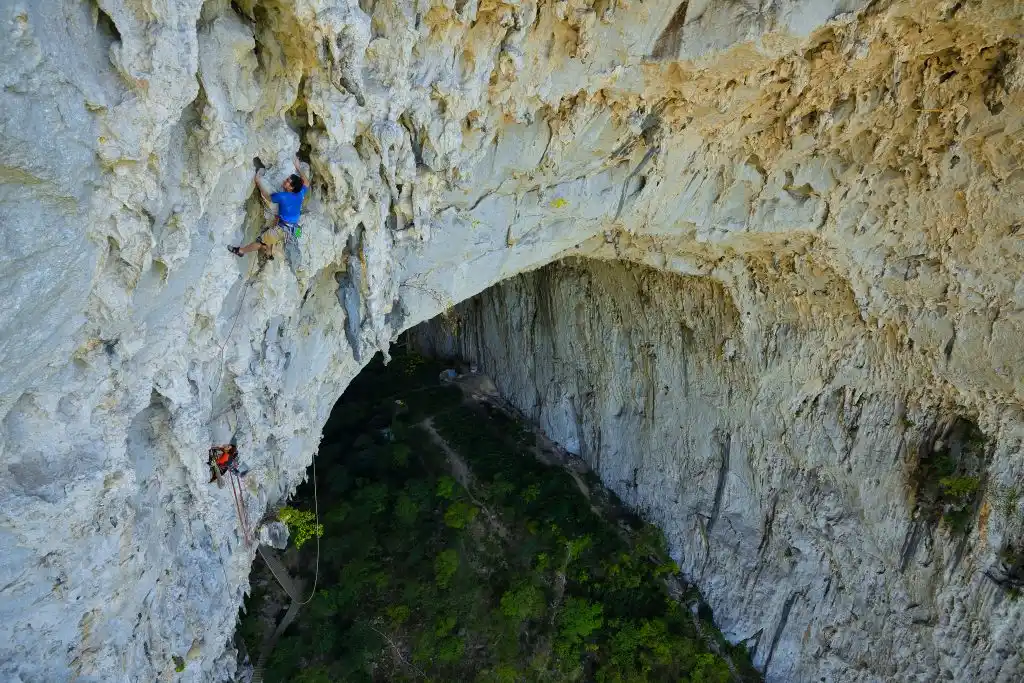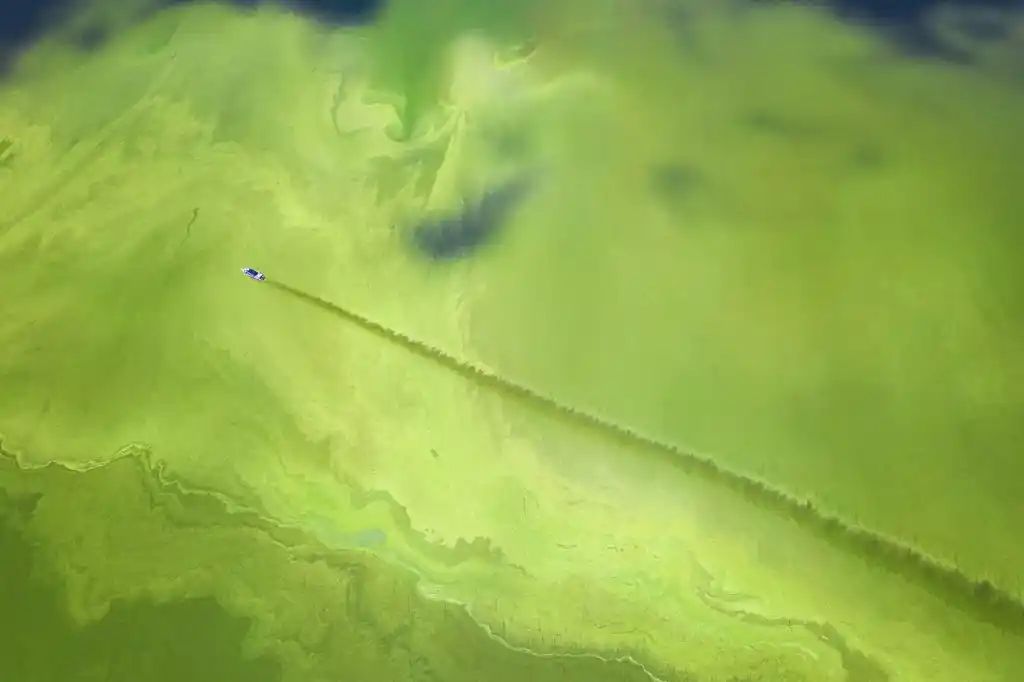
One of the grittiest expeditions of Keith Ladzinski’s life was his first assignment for National Geographic.
In 2012, he journeyed to Antarctica on a team of four to find and climb untouched spires in the desolate Queen Maud Land region. Between plummeting temperatures, nearly losing his sail on a kite ski and slim-to-no chances of being rescued in the event of an accident, he says that trip had a fair amount of unpleasantness.
“This was a genuine icey desert hell,” he says.
Despite the ungodly conditions, Ladzinski, who grew up in Colorado Springs and now calls Boulder home, looks back on the 50-day trip fondly as more than just a career kickstart.
“One of the best parts about [expeditions], aside from the pictures I’m taking, is you learn a lot about yourself and what you’re capable of — and what you aren’t capable of as well.”
Ladzinski has made a career out of pressure cooker scenarios like this. Over the last two decades, he’s traveled to the farthest reaches of the seven continents documenting natural history, climate change and extreme sports that have culminated in multiple Emmy nominations and frequent contributions to national publications and brands like National Geographic, The New York Times,Red Bull and The North Face.
The impact of his work goes beyond reflections of his own capabilities while hanging from a 2,000-foot Antarctic cliff with a camera on his hip. He’s as motivated as ever to make stunning pictures and films with the goal of sharing new perspectives and sparking community conversation for global audiences. Some of his most recent work — and inspiration — he’s found right in Boulder’s backyard.

‘The Holy Grail’
Ladzinski discovered his intrepid spirit in Colorado. Even before he owned a camera, family trips to the mountains west of Colorado Springs instilled an early admiration of the outdoors.
At the same time, he was also gravitating toward extreme sports as a sponsored skateboarder and through other hobbies like mountain biking and climbing. So when he nabbed a camera from a local pawn shop for a few hundred bucks, he started bringing it along wherever those activities took him.
While mastering his skills wielding a camera in his free time, opportunity arose in his early 20s after he was let go from the “golden handcuffs” of a steady programming gig.
“Coding was a lot of fun, but it was never the thing I loved. It was still a means to an end,” he says. “Whereas photography was the Holy Grail for me.”
With a couple months of severance providing runway support, he remembers deciding between finding a new job or taking the leap.
“I chose the risk-it-all path.”

Kentucky Joe
Ladzinski’s commitment to his craft slowly began to pay off as he picked up steady climbing assignments in the early 2000s, combining techniques he learned on skateboarding projects — like off-camera lighting — with landscape photography that requires patience, location and timing.
During a presentation for National Geographic, Ladzinski described how some of those early days were spent somewhat frivolously in the Nevada desert with a crew of climbing dirtbags. Strapped for cash, some of them stayed for free at an apartment building owned by a squirrel hunter and gun slinger nicknamed Kentucky Joe. Although Ladzinski was there on assignment, when the weather wasn’t good for climbing he took the chance to get creative.
“We went out to the desert, where there’s all this junk and garbage, and we started shooting these silly portraits,” he told the crowd.
For example, take one mocking photo of a shirtless climber on his back benching a pair of dirty tires on the ends of a rusty cylindrical tube, surrounded by a few equally unclothed onlookers. Dramatic snow-capped mountains fill the background.
“We were just laughing while taking these pictures,” he said.
That same kind of resourcefulness, outside-the-box thinking and relationships he built hanging around in the desert translated into more serious freelance work.
“I started getting great offers and opportunities to travel the world and, man, it just sort of took over my life.”

Out your door
Two decades into his career, Ladzinski isn’t as keen to travel hundreds of days a year on assignment anymore — his young family is enough to keep him home.
“There’s nothing more magnetic than being with him,” says Ladzinski of his son, who already shares his affinity for wild animals and places. The two partner up to go on “Boulder safaris” and other nature-based excursions like finding a nest of owls and traveling to the Sandhill Crane Festival in Monte Vista.
“Getting to do these things with him, where he gets to see a little bit of my life and I get to re-experience things through his eyes, is one of the coolest things,” he says.
That’s inspired Ladzinski to take a longer look at traditional subjects with a fresh mindset, even in his Boulder front yard, like earlier this spring when he photographed a pink-blossomed cherry tree in his front yard using multiple in-camera exposures to create a dizzying celestial spiral effect.
In an ongoing project, Ladzinski is gearing up for another round of storm chasing in the heart of the country. He says that process has reconnected him with people who live and think differently than him — something that’s needed in today’s polarized world.
“We’re such a divided country right now,” he says. “And I think a lot of it is because we just simply don’t go to places where the other people live and listen to them.”
To that end, Ladzinski continues to stoke a perhaps innate human curiosity to know ourselves and each other — one photo at a time.

Photographed for Canon, 2023.
